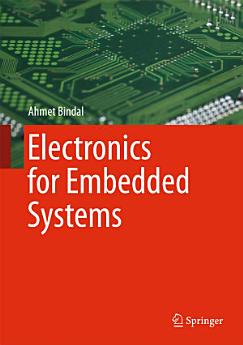Electronics for Embedded Systems
apr. 2017 · Springer
Carte electronică
298
Pagini
reportEvaluările și recenziile nu sunt verificate Află mai multe
Despre această carte electronică
This book provides semester-length coverage of electronics for embedded systems, covering most common analog and digital circuit-related issues encountered while designing embedded system hardware. It is written for students and young professionals who have basic circuit theory background and want to learn more about passive circuits, diode and bipolar transistor circuits, the state-of-the-art CMOS logic family and its interface with older logic families such as TTL, sensors and sensor physics, operational amplifier circuits to condition sensor signals, data converters and various circuits used in electro-mechanical device control in embedded systems. The book also provides numerous hardware design examples by integrating the topics learned in earlier chapters. The last chapter extensively reviews the combinational and sequential logic design principles to be able to design the digital part of embedded system hardware.
Despre autor
Ahmet Bindal received his M.S. and Ph.D. degrees in Electrical Engineering from the University of California, Los Angeles CA. His doctoral research was on the material characterization for high electron mobility GaAs transistors. During his graduate program, he was a graduate research associate and technical consultant for Hughes Aircraft Co. In 1988, he joined the technical staff of IBM Research and Development Center in Fishkill, NY, where he worked as a device design and characterization engineer. He developed asymmetrical MOS transistors and ultra thin Silicon-On-Insulator (SOI) technologies for IBM. In 1993, he transferred to IBM in Rochester, MN, as a senior circuit design engineer to work on the floating-point unit for AS-400 main frame processor. He continued his circuit design career at Intel Corporation in Santa Clara, CA, where he designed 16-bit packed multipliers and adders for the MMX unit for Pentium II processors. In 1996, he joined Philips Semiconductors in Sunnyvale,CA, where he was involved in the designs of instruction/data caches and various SRAM modules for the Trimedia processor. His involvement with VLSI architecture started in Philips Semiconductors and led to the design of the Video-Out unit for the same processor. In 1998, he joined Cadence Design Systems as a VLSI architect and directed a team of engineers to design self-timed asynchronous processors. Starting in 2000, he implemented 802.11a and 802.11b wireless LAN protocols in VLSI. After approximately 20 years of industry work, he joined the Computer Engineering faculty at San Jose State University in 2002. His current research interests range from Nano-Scale Electron Devices to VLSI Design and Robotics. Dr. Bindal has contributed to over 30 scientific journal and conference publications and 10 invention disclosures with IBM. He currently holds 3 U.S. patents with IBM and 1 with Intel Corporation.
Evaluează cartea electronică
Spune-ne ce crezi.
Informații despre lectură
Smartphone-uri și tablete
Instalează aplicația Cărți Google Play pentru Android și iPad/iPhone. Se sincronizează automat cu contul tău și poți să citești online sau offline de oriunde te afli.
Laptopuri și computere
Poți să asculți cărțile audio achiziționate pe Google Play folosind browserul web al computerului.
Dispozitive eReader și alte dispozitive
Ca să citești pe dispozitive pentru citit cărți electronice, cum ar fi eReaderul Kobo, trebuie să descarci un fișier și să îl transferi pe dispozitiv. Urmează instrucțiunile detaliate din Centrul de ajutor pentru a transfera fișiere pe dispozitivele eReader compatibile.






